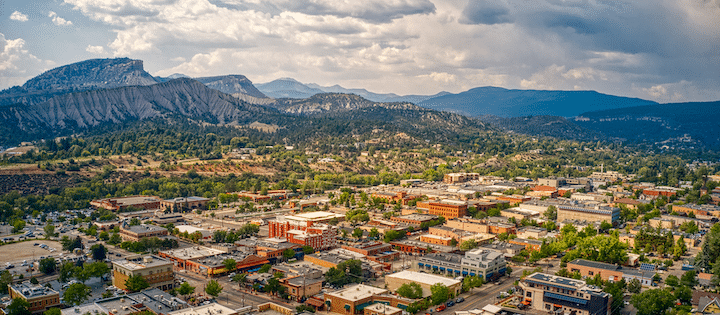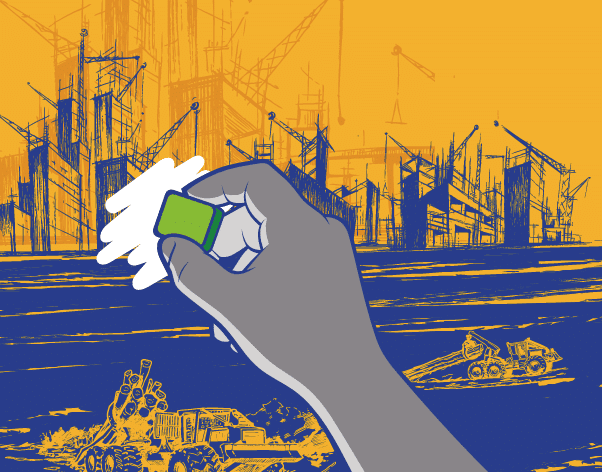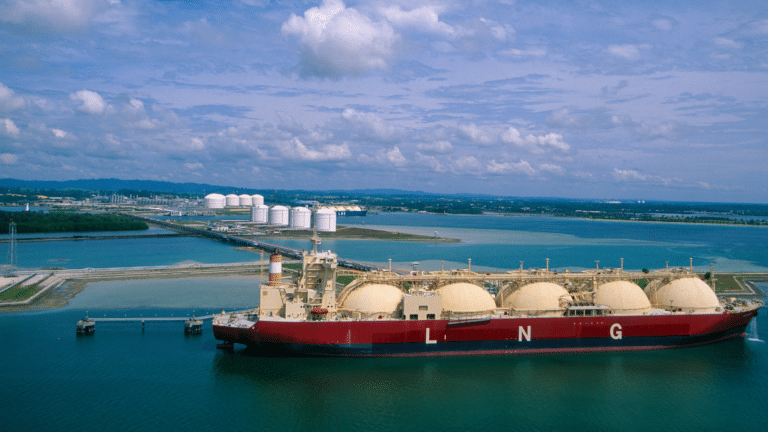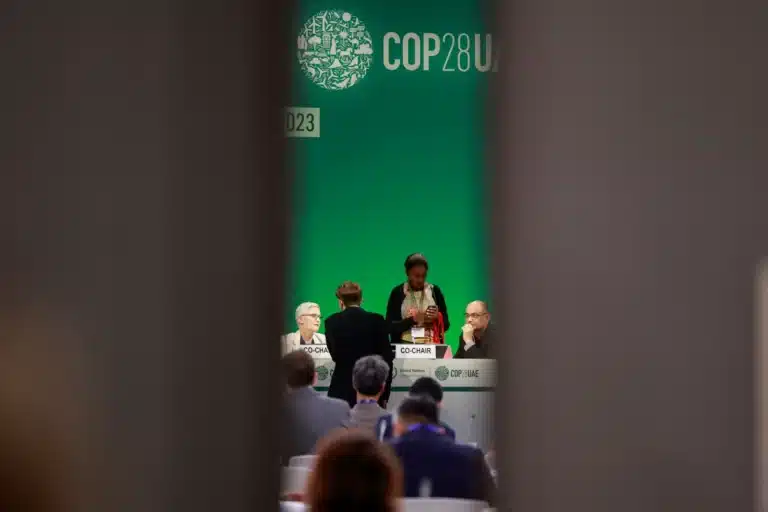Read the Commentary
Introducing our Belt and Road Initiative Paper Series
The Belt and Road Initiative is the largest infrastructure initiative ever. From geopolitics to markets to the natural environment, across much of the globe, its impacts are far-reaching.
This essay launches our paper series on the Belt and Road Initiative at the Center on Global Energy. In this essay, CGEP Fellow Jon Elkind explores the environmental impacts of the Belt and Road Initiative and proposes ways to minimize those impacts. The paper discusses the “green” goals of the Belt and Road Initiative and suggests tools for achieving those goals, including binding environmental guidelines, voluntary programs and industry-led communities of practice.
In this series we will offer research and commentary on the Belt and Road Initiative and its impacts around the world. We will cover a range of energy-related topics and offer different points of view. We welcome submissions for this series. Please send proposed topics and outlines to [email protected]. Our guiding principle will be to inform readers with objective, research-based analysis. We hope to contribute to constructive global dialogue on these important topics in the months and years to come.
David Sandalow
Inaugural Fellow and Director, China Program, Center on Global Energy Policy
Introduction
China’s Belt and Road Initiative (BRI) faces a decisive moment this week when Beijing will host leaders from dozens of participating countries at the Second BRI Forum. Despite its lofty “green development” goals, the BRI has faced escalating concern over its environmental impacts. This week and in the months that follow, either effective mechanisms to improve the BRI’s environmental impacts will be introduced or many will conclude that the five-year-old BRI is no friend to local air or water quality, the global climate, or indeed development prospects.
Fortunately, a number of approaches could be employed to deliver a greener BRI. One of the most effective ways to protect the environment under BRI is by introducing much greater project transparency and mandatory impact assessments. In fact, some would argue that such assessments are a prerequisite for good environmental outcomes. Other structures could also improve the environmental performance of BRI projects but arguably would deliver less reliable environmental benefits. This paper surveys the considerable environmental impacts of the BRI in its current form and highlights several approaches to limit—and ideally eliminate—negative environmental impacts.
read the report
Scale and Stakes of the Belt and Road Initiative
The Belt and Road Initiative is massive. The combination of the Silk Road Economic Belt, reaching from China to Central and South Asia and onward to Europe, and the New Maritime Silk Road, reaching from China to Southeast Asia and the Middle East and North Africa to Europe, touches an enormous mass of humanity. 68 countries are participating, representing roughly two-thirds of the globe’s population, one-third of global economic output, and more than 55 percent of global carbon dioxide emissions.[1]
Citizens in many of these 68 countries face grinding and widescale poverty, so the potential positive human impact, if BRI results in greater economic opportunity in less-developed countries, could be significant.[2] Estimates of the financial parameters of BRI are also noteworthy. The Paulson Institute suggests that infrastructure requirements under BRI could reach $1 trillion to $1.6 trillion per year over the coming decades.[3] Whether Belt and Road brings positive or negative results is thus a consequential question for people living in those countries, first and foremost, as well as for others around the world.
BRI’s supporters—including Chinese officials and some foreign commentators—argue that BRI could result in the mobilization of capital and the creation of infrastructure to facilitate future trade. Advocates for BRI stress that projects under the initiative are implemented faster than, and without the sensitive policy conditionalities of, projects supported through conventional development finance organizations.
BRI’s critics have focused on several concerns. Many outside China have focused on the creation of unsustainable indebtedness in the recipient countries, the lack of transparent decision-making around projects, and harm to the local and global environment.[4] Some inside China have evidently also criticized BRI as a poor use of resources in a time of slowing domestic growth and increasing domestic requirements such as rising pension costs, falling currency reserves, and shrinking tax receipts.[5]
Some of the very features that supporters of BRI applaud lead to the concerns that are expressed by critics. Fundamentally, BRI can be understood as an investment and lending program under which projects are financed by Chinese capital and constructed quickly by Chinese firms using surplus Chinese material and a significant share of Chinese labor. The potential good news in terms of immediacy of impact is that, without making recipient countries wait years to complete complex project due diligence such as often occurs in the traditional multilateral development banks, BRI creates new transportation and logistics systems, and the necessary energy and other infrastructures, with the prospect of future trade connectivity. The complications arise, however, from the very same rapidity of action, as well as from the types and placement of infrastructure and the nature of the technologies employed.
Green Goals of BRI
At the First BRI Forum in May 2017, the Chinese government issued official guidance on promoting the “greening” of the BRI.[6] In that same month, the Chinese government also issued an ecological and environmental cooperation plan and a statement on vision and action in energy development in the Belt and Road.[7] These three documents (the guidance, the cooperation plan, and the vision and action plan) enunciate the broad goal of implementing the massive BRI in a manner that preserves and enhances environmental quality while delivering economic development in energy and infrastructure.
The policy guidance document, for example, states that the promotion of a green Belt and Road is “an essential effort.” The document calls for the ensuring of “eco-environment safety” while implementing the five overarching goals of BRI that are enumerated above. It calls for the use of traditional and new media to share information on BRI activities and for the fostering of partnerships with environmental nongovernmental organizations (NGOs). The document calls for those implementing BRI to “sharpen environmental risk prevention capability” and prioritize environmental quality. It also calls for implementers to “formulate environmental protection standards and codes for infrastructure construction, increase environment protection service and support for major infrastructure construction projects along the route.”[8]
The ecological and environmental cooperation plan provides further details about the intended actions. It states, for example, that the Chinese authorities will create a “big data service platform…to provide comprehensive information support and guarantee for [an] eco-friendly Belt and Road.” The cooperation plan also calls for “enterprises to play the major role in environmental governance.” It provides for a number of best-practice and information-sharing efforts, such as codes of conduct that can be developed by industry associations and chambers of commerce on “eco-environment behaviors for overseas investments,” and the regular publication of reports and plans for implementing environmental laws and regulations, including through internet-based systems.[9]
The third official document, the vision and action plan on energy development, is more general in nature than is the environmental cooperation plan. The vision and action plan underscores the commitment of the BRI to energy development that is mutually beneficial, market oriented, safe and secure, green and efficient, and “harmonious” in terms of social impacts. The document affirmatively emphasizes the importance of clean energy development, but it does not state that BRI will exclusively support clean energy investments, and it does not rule out emissions-intensive projects such as coal-fired power plants.[10]
Important though it is to establish policies and broad guidance for an expansive effort like BRI, to date these documents have not translated into observable outcomes such as oversight systems, changes in investments, or determinations about technology to be deployed. The April 2019 Second BRI Forum and the months that follow thus present a logical period in which policies and guidance can be supplemented through the issuance of concrete, robust, clear requirements. The remainder of this piece describes the environmental and social risks of the BRI and several options for addressing them with specific measures to implement the documents issued to date.
Environmental and Social Risks Associated with the Belt and Road
The types of BRI investment projects that have the greatest potential for environmental impacts include highways, railroads, thermal power plants, hydropower plants, nuclear power plants, electricity transmission systems, oil and gas pipelines, mining operations, and heavy industry. These kinds of major investment projects have the potential for major negative impacts in the form of local air pollution from smokestack emissions and construction dust; water scarcity and water quality due to water withdrawals and effluents; and habitat and biodiversity due to the construction of large new infrastructures. Moreover, there are the risks to the global climate arising from the locking-in of high-emitting infrastructure that releases carbon dioxide, methane, and other greenhouse gases into the atmosphere.
The scale of investment into heavy-polluting technology is not trivial. To focus on coal-fired power plants, for example, according to the Global Development Policy Center at Boston University, in 2018 such plants represented fully 42 percent of Chinese development finance in energy.[11] In the five years of the BRI, lending to BRI countries for coal-fired power plants has averaged at least $4.68 billion per year. Moreover, a significant share of these investments has been in subcritical coal plants, the least efficient and most polluting class of power plants.[12] Such plants reliably result in noxious, deadly air pollution, in addition to harming the global climate. Estimates from the UN’s World Health Organization quantify the human impact of this pollution: one study found that in 2016 more than one million Chinese citizens died from dirty air. Another study put the figure even higher—more than 4,000 deaths per day.[13] Exactly because of such health risks, China has understandably been focusing on reducing coal usage within its own borders—even as it increases the sale of coal-fired power plants to countries participating in BRI.
The likelihood of negative environmental and social impacts from BRI projects is magnified by several factors. First, as noted above, some of the countries participating in BRI are impoverished developing economies. Many of them lack effective governance systems, especially for planning and environmental protection. Environmental and social standards in the host country may be nascent, and in some cases not developed at all. Opportunities for transparency and public input on BRI projects may be limited if even existent. In addition, local environmental enforcement mechanisms may also be underdeveloped, so projects that fail to perform as promised and result in excessive pollution may operate without hindrance. Moreover, some recipient-country decision makers, who are looked to for approvals for the BRI investment projects, may be focused predominantly on fostering near-term economic development, in the hopes of providing new opportunity for local populations. These decision makers may treat environmental and social safeguards, and even medium- and long-term debt levels, as inconvenient distractions from their development goals—something to be short-circuited.
A further complication arises from the fact that the six economic corridors that are the prime focus under BRI are transboundary in nature and pass through many regions that have not been the focus of economic development to date. This means that remote, and in some cases pristine, ecologically important areas are likely to be developed.[14] In turn, habitats can be destroyed, biodiversity severely impacted, and alien species introduced—all of which are concerns that have been highlighted concretely with greater and greater frequency over the past couple of years.[15]
Clearly, tensions between development and environment priorities are not a new phenomenon, nor one limited to countries participating in Belt and Road. These very same tensions have erupted the world over. They motivated the creation of environmental impact assessment procedures in the industrialized world. They also led to the establishment of environmental and social impact safeguards within the operations of the World Bank, the several regional development banks, and most if not all bilateral aid agencies.
Regardless, controversy surrounding impacts from BRI projects is rising. Several projects have now been delayed—and some actually canceled—due to a variety of local or national concerns over financial aspects, environmental factors, and social impacts.[16] The power of local stakeholders may be disorienting for Chinese decision makers and companies that may be more accustomed to securing decisions quickly and then pressing ahead regardless of local dissatisfaction.[17]
A final point that Chinese decision makers may find worthy of note is the reputational risk for China arising from negative environmental and social impacts of BRI projects. All parties know well that BRI is a flagship effort of the Chinese government, an undertaking that Beijing has supported in part to create “soft power” with recipient countries. If air or water quality deteriorates after the building of a BRI-supported project, this environmental impact comes with a distinctly “Made in China” imprimatur. The downside—for China itself—of poor environmental standards under BRI should not be underestimated.
Binding Environmental Guidelines
The most straightforward and reliable method for “greening” the BRI would be to institute binding environmental review procedures, and perhaps also performance standards, that would apply to all projects. Interventions of this sort could draw on models that are used elsewhere around the world, so they would be relatively simple to replicate. For example, most major commercial banks and all existing multilateral financial institutions employ environmental and social safeguards. These safeguards typically use building blocks such as the assessment in advance of the impacts on local and regional air and water quality, people living in directly affected communities, and the global environment. Often the assessments examine the possible impacts of alternatives to the proposed project—whether based on different technology, location, construction technique or timing, or other variable factors. Almost always, the safeguards require consultation with affected stakeholders, and often they require the project proponents to reply to significant critiques of the proposed project or its impacts.
The introduction of mandatory environmental and social safeguards for the Belt and Road would be facilitated by the fact that most of the capital for BRI projects is lent by a small number of Chinese state-owned banks. The two most significant are China Development Bank and China Exim Bank, followed then by four state-owned commercial banks.[18] A much more modest role has been played to date by a handful of other official banks, including the Beijing-led Asian Infrastructure Investment Bank (AIIB). AIIB has been developing its own environmental and social frameworks for lending operations, drawing on the experience of the Bretton Woods institutions.[19] But AIIB’s frameworks are young and largely untested, and the procedures of other Chinese policy banks appear to be even less developed. This author has been unable to find evidence that these frameworks have ever resulted in the alteration or cancelation of a project due to projected impacts. Thus, it cannot be said that the banks’ lending policies are exerting a meaningful influence to foster a green Belt and Road.[20]
International Coalition for Green Development
If China’s decision makers determine, for whatever reason, that the introduction of a binding set of environmental procedures is not desirable, there are other approaches that could nonetheless help to improve the environmental performance of BRI. They would be less effective than mandatory requirements in achieving the declared objective of a green Belt and Road, but they would exert some positive influence.
One such option that appears to be taking shape is the International Coalition for Green Development on the Belt and Road. This voluntary effort, which was announced jointly in 2017 by China’s Ministry of Ecology and the Environment and the United Nations Environment Program, is only slated to be formally inaugurated this year. As the UN Environment Program noted in May 2017, “with any such large-scale development comes significant environmental challenges. In addition to the immediate biophysical impacts, if Belt and Road investments lock in unsustainable infrastructure, technology, and resource extraction, this will create long-lasting negative environmental consequences. These could, in turn, seriously undermine the ability of many countries to meet their targets under the 2030 Agenda for Sustainable Development.”[21]
The coalition is meant to work against such outcomes. Its membership, which includes many capable and prominent organizations from the nongovernmental world, is committed to working with Chinese institutions that are the sponsors and implementers of BRI, but especially with the would-be recipient countries of BRI investments “in order to help them establish the enabling conditions that will ensure that the investments are environmentally sustainable.”[22]
This focus on institutional capacity within the recipient countries is a vital ingredient for the ultimate success of BRI. Increased institutional capacity could at times mean that the host country or some of its citizens oppose certain features of proposed BRI investments; it may even mean that the host country rejects a potential investment outright. On the other hand, those projects that do proceed would enjoy greater local buy-in, a critical contributor to the ultimate success of the project. In this manner, the development objectives of BRI, and the prospects for a sustainable, green BRI, would be enhanced if the host government has effective capacity. It is critical to note, however, that developing institutional capacity takes time. Proceeding with BRI investments in a hurry—especially in advance of this capacity building—thus creates risks for all concerned. Moreover, for reasons discussed above, host government officials may respond to near-term economic expediency and approve projects that will reliably result in negative environmental and social impacts. Capacity building alone can contribute to, but cannot solely be relied upon to deliver, the outcome of a green Belt and Road.
Industry Communities of Practice
Another approach that can be used to improve the prospects for a green BRI is the development and implementation of industry-led communities of practice. As an example of such communities, it is worthwhile to examine the activities of an important international industry collaboration where one of the participating companies is already a major Chinese state-owned enterprise, namely the China National Petroleum Corporation (CNPC).
CNPC is one of the thirteen member companies in the Oil and Gas Climate Initiative (OGCI), a voluntary association that is committed to taking practical actions to limit climate change. OGCI seeks to leverage the collective strength of the member companies to provide a positive example for others in the oil and gas industry, and to reduce the carbon footprints of energy, industry, and transportation.[23] Taken together, the OGCI members represent over 30 percent of global oil and gas production, and they supply roughly 20 percent of global primary energy consumption.[24] OGCI undertakes joint technical research, industry collaborations, and goal-setting exercises in three broad areas—reducing the GHG footprint of the energy value chain, accelerating low-carbon solutions, and enabling a circular carbon model. In addition, through its Climate Investments fund, now valued at $1.3 billion over ten years, OGCI makes venture investments that help to advance these workstreams and develop technology that can be deployed in the member companies’ operations.
Each company wishing to participate in OGCI undertakes to
- provide clear support for the goals of the Paris climate agreement;
- contribute $100 million over ten years to a Climate Investments fund;
- report key data, using common methodologies, to measure OGCI’s progress in agreed-upon areas;
- support the OGCI methane target (discussed later);
- support future work in relation to carbon capture, utilization, and storage;
- share appropriate information on low-carbon best practices and experience; and
- support an initiative on Zero Routine Flaring by 2030.[25]
Perhaps the most concrete pledge by OGCI to date is the methane leakage reduction target that the OGCI chief executives announced in New York in September 2018. Under this collective pledge, the companies will reduce their methane leakage to less than 0.25 percent (with a “stretch” goal of less than 0.20 percent) by 2025, from a collective baseline of 0.32 percent leakage as of the time of the announcement. The pledge applies to all of the companies’ upstream oil and gas assets (including liquefaction) in those projects where one of the companies serves as the operator.[26] Moreover, the OGCI member companies pledged to collaborate with nonmember companies in other segments of the value chain—for example, gas transmission and distribution companies—to reduce methane intensity overall.
In the context of BRI, the OGCI model could be adapted and applied to one or more industries that are major portions of the overall BRI investment portfolio, or that represent even a lesser share of the portfolio but have other important characteristics such as these:
- The target for cooperation addresses a significant environmental threat.
- Effective solutions for evaluating and then remediating the threat are either available or can be developed on a timely basis.
- Best practices can be shared without undue risk to the competitive interests of different companies.
- Results can be quantified and recorded.
- One can build a system by which external stakeholders can verify results, enhancing public confidence in the desired environmental result.
Several industries—such as building materials, mining, or metals—might be worthy of focus. In the energy sector, power plant builders might set a progressive target for significantly reducing the emissions profile of the power plants that they build under BRI. Or perhaps several such communities of practice could be created.
Conclusion
China’s BRI has the potential to mobilize massive investment flows in the name of facilitating infrastructure development, economic opportunity, and trade involving the participating countries. If BRI projects are well designed and well implemented, they could make a serious impact on the development prospects for BRI countries.
Unfortunately, as one can see from the pattern of investments to date, less desirable results cannot be ruled out. Indeed, many existing BRI investments will cause serious local, regional, and global environmental impacts. Moreover, abundant international experience suggests that such negative impacts will continue in the absence of rigorous and binding environmental and social safeguards. BRI aims to develop new transportation and logistics infrastructure, and related energy systems, along corridors that often cross jurisdictional boundaries; that are underdeveloped and, in some cases, pristine regions; and that are located in countries that may lack the indigenous institutional capacity to establish and enforce effective laws and standards.
Will China use the April 2019 Second BRI Forum to inaugurate the kinds of mechanisms that can deliver a green Belt and Road? The importance of creating a sustainable BRI has been identified very plainly by the Chinese government, and many of the declared high-level policies signal the kinds of ambition that are consistent with that green outcome. Chinese lending institutions and commercial companies have the technical sophistication and available models to change BRI to a less destructive and more sustainable, greener version.
Nonetheless, to date, all too little greening is actually occurring. The April 2019 Second BRI Forum provides the opportunity to set that right. By strengthening explicit guidelines; by increasing opportunities for the public to engage in timely and well-informed dialogue and, where needed, even contest proposed projects; and by employing industry best-practice collaborations, or through some combination of these approaches, the goal of creating a green Belt and Road can, at last, be made real.
BIBLIOGRAPHY
[1] Population and GDP figures drawn from Hui Lu, Charlene Rohr, Marco Hafner, and Anna Knack, “China Belt and Road Initiative—Measuring the Impact of Improving Transport Connectivity on International Trade in the Region—A Proof-of-Concept Study,” RAND Europe, 2018, accessed October 24, 2018, https://www.rand.org/pubs/research_reports/RR2625.html. Carbon dioxide figure drawn from “Green Belt and Road Strategy,” UN Environment, accessed October 24, 2018, https://wedocs.unep.org/bitstream/handle/20.500.11822/25178/UN%20Environment%20Belt%20and%20Road%20Strategy%20final.pdf?sequence=38&isAllowed=y.
[2] The World Bank indicates that as many as one-fifth to one-quarter of the populations of the BRI countries live below their national poverty line. See Michele Ruta, “Three Opportunities and Three Risks of the Belt and Road Initiative,” World Bank—the Trade Post blog, May 4, 2018, accessed October 24, 2018, http://blogs.worldbank.org/trade/three-opportunities-and-three-risks-belt-and-road-initiative. Another analysis points out that the 68 BRI countries include high-income countries (such as the United Arab Emirates and Republic of Korea) and upper-middle-income countries (such as Malaysia)—not just poor countries. For example, see Lihuan Zhou et al., “Moving the Green Belt and Road Initiative from Words to Actions,” working paper, World Resources Institute, accessed December 11, 2018, https://www.bu.edu/gdp/files/2018/11/GDP-and-WRI-BRI-MovingtheGreenbelt.pdf.
[4] For indicative examples of the disputes over the potential negative impacts of BRI in regard to debt and transparency of decision-making, see Charles Parton, “Belt and Road is Globalisation with Chinese Characteristics,” Financial Times, October 3, 2018, https://www.ft.com/content/3c437b42-c6f8-11e8-ba8f-ee390057b8c9, or Christopher Balding, “Why Democracies Are Turning against Belt and Road—Corruption, Debt, and Backlash,” Foreign Affairs, October 24, 2018, accessed October 27, 2018, https://www.foreignaffairs.com/articles/china/2018-10-24/why-democracies-are-turning-against-belt-and-road. Expressions of concern about the impact of BRI often trigger indignant responses from China. For an example of such replies, see Lu Wei, “Debt Trap Accusations Malicious Nonsense,” Belt and Road Portal, October 22, 2018, accessed October 24, 2018, https://eng.yidaiyilu.gov.cn/ghsl/wksl/69374.htm. Adjudicating such debates is not the purpose of this paper, but no discussion of Belt and Road would be complete without acknowledging the existence of these debates.
[7] “The Belt and Road Ecological and Environmental Cooperation Plan,” Belt and Road Portal, May 14, 2017, accessed October 24, 2018, https://eng.yidaiyilu.gov.cn/zchj/qwfb/13392.htm. Also: “Vision and Actions on Energy Cooperation in Jointly Building the Silk Road Economic Belt and 21st-Century Maritime Silk Road,” Belt and Road Portal, May 16, 2017, accessed October 24, 2018, https://eng.yidaiyilu.gov.cn/zchj/qwfb/13754.htm.
[8] “Guidance on Promoting.”
[9] “Belt and Road Ecological.”
[10] “Vision and Actions.”
[12] Tufts University’s Kelly Simms Gallagher, who has done some of the most detailed analysis of the local environmental and global climate impacts arising from Chinese overseas investments, notes that between 2001 and 2016 (a portion of which timeframe pre-dates the start of BRI), Chinese financial institutions supported the construction of more than 50 coal-fired power plants, 58% of which were sub-critical. Kelly Sims Gallagher, “China’s Belt and Road Is Conduit for Polluting Investments,” Financial Times, August 9, 2018, accessed October 24, 2018, https://www.ft.com/content/f965fa22-9be4-11e8-9702-5946bae86e6d.
[14] The six economic corridors are a China-Mongolia-Russia corridor, a New Eurasian Land Bridge linking China’s coastal cities to Rotterdam in the Netherlands, a China–Central Asia-West Asia corridor, a China–Indochina Peninsula corridor, a China-Pakistan corridor, and a Bangladesh-China-India-Myanmar corridor. For a discussion of the risks arising from the development of undeveloped regions, see “The Belt and Road Initiative: WWF Recommendations and Spatial Analysis,” Worldwide Fund for Nature, May 2017, accessed October 24, 2018, http://awsassets.panda.org/downloads/the_belt_and_road_initiative___wwf_recommendations_and_spatial_analysis___may_2017.pdf.
[15] For a discussion of habitat destruction related to a BRI-supported dam project in Indonesia, see Binsar Bakkara, “Indonesia Court Allows Dam in Orangutan Habitat to Proceed,” The Tribune, March 4, 2019, accessed March 10, 2019, http://www.tribtown.com/2019/03/04/as-indonesia-china-orangutans/. For a discussion of the introduction of alien species, see Shreya Dasgupta, “China’s Belt and Road Initiative Could Increase Alien Species Invasion,” Mongabay, February 5, 2019, accessed March 10, 2019, https://news.mongabay.com/2019/02/chinas-belt-and-road-initiative-could-increase-alien-species-invasion/. And for a discussion of efforts to limit impacts on pristine lands from BRI development, see Elizabeth Losos, Alexander Pfaff, and Lydia Olander, “The Deforestation Risks of China’s Belt and Road Initiative,” January 28, 2019, blog post, Brookings Institution, accessed March 10, 2019, https://www.brookings.edu/blog/future-development/2019/01/28/the-deforestation-risks-of-chinas-belt-and-road-initiative/.
[16] See Pei, “Will China Let Belt.”
[19] Daniele Brombal, “Planning for a Sustainable Belt and Road Initiative: An Appraisal of the Asian Infrastructure Investment Bank (AIIB) Environmental and Social Safeguards,” in Normative Readings of the Belt and Road Initiative, ed. W. Shan et al., Springer Nature, 1 June 2018, https://doi.org/10.1007/978-3-319-78018-4_7.
[20] Zhou et al. provide an exceptionally thoughtful analysis of Belt and Road lending in energy and transportation, based on the incomplete data that are publicly available on lending by the major Chinese banks. The authors of the WRI analysis conclude, “Most Chinese deals in energy and transportation over the period reviewed were tied to carbon-intensive sectors.” Especially significant is their further finding that BRI projects in energy and transportation fail even to comply with priorities that the recipient countries have prioritized in their Nationally-Determined Contributions, prepared for and submitted to the UNFCCC pursuant to the Paris climate agreement. The country NDCs are not all highly elaborated, and some are so general as not to provide a meaningful basis to orient investment, but the NDCs do indicate recipient-country priorities, so it is notable that the BRI investments in many cases do not reflect those priorities (Zhou et al., “Moving the Green Belt”).
[23] Other members of OGCI are BP, Chevron, ENI, Equinor, ExxonMobil, Occidental Petroleum, PEMEX, Petrobras, Repsol, Saudi Aramco, Shell, and Total. The three US-based companies were the most recent members to sign on, having joined only in September 2018. See the website of the Oil and Gas Climate Initiative, accessed October 24, 2018, https://oilandgasclimateinitiative.com.






